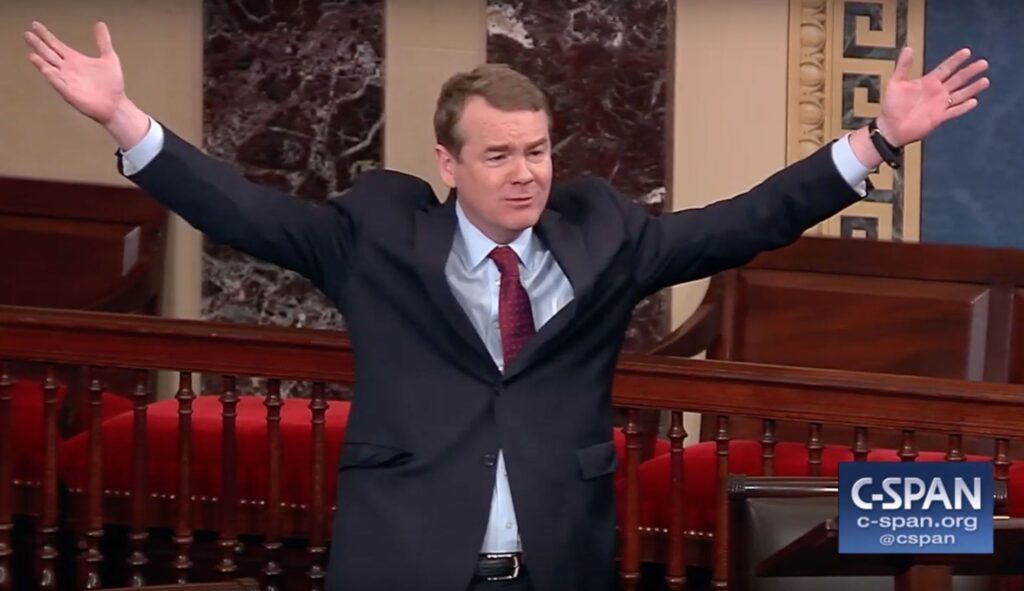NASA act includes Perlmutter request for a plan to Mars
“The most significant and inspirational journey in history” was what U.S. Rep. Ed Perlmutter, D-CO7, called a provision in S. 442, the National Aeronautics and Space Administration Transition Authorization Act of 2017. He wrote the measure, calling for a plan to successfully launch a human space flight mission to Mars by 2033.
The U.S. House unanimously approved the bill Tuesday night, March 7, and the Senate did likewise on Feb. 17. It now goes to President Donald Trump for his signature. If signed, it would be the first NASA authorization legislation to be adopted since 2010.
Section 435 of this year’s bill requires NASA to report on the technical and budgetary requirements for a human space flight mission to Mars in the year 2033, utilizing the Space Launch System and Orion Multipurpose Crew Vehicle, two projects considered essential to the future of deep space missions.
“NASA has been working on the journey to Mars for several years, but we currently lack focus and conviction for this mission,” Perlmutter said in a news release. “We need a firm timeline and plan to put the building blocks in place. If we set a goal and work together, we can get our astronauts to Mars by 2033.”
Since joining the House Science, Space & Technology Committee, Perlmutter has worked to secure a long-term plan from NASA to ensure it has the authority, funding and resources necessary to send humans to Mars. The two planets will be in an orbit and alignment in 2033 to provide the “optimal scenario to more safely get our astronauts to Mars and back,” he added.
“I have seen what we can accomplish when we put the best and brightest in a room together,” Perlmutter said. “I look forward to working together to provide the necessary resources to solve tough scientific, engineering and mathematical problems to better our society and our understanding of the solar system and beyond. This includes dozens of Colorado aerospace companies and research institutions which will help us reach the next frontier of deep space exploration.”
In remarks on the House floor, Perlmutter said the bill “ensures the hardworking people at NASA and the thousands of private aerospace workers in Colorado and across the country have a constant sea of purpose and the backing of Congress to continue advancing our quest to understand our planet and explore other celestial bodies.”
Perlmutter added the bill requires detailed plans from NASA on how to do that and on the timelines of getting to Mars by developing “a human exploration road map.” In addition, section 435 requires NASA to report back on the feasibility of a human mission to Mars by the year 2033.
“Sixteen years from now, Earth and Mars will be aligned for what could be the most significant and inspirational journey in history,” Perlmutter said. “… I know we can do this. This is a mission that all Americans will be proud of. … This will give us a real goal and a real project to get our astronauts to Mars by 2033.”
The NASA Authorization Act of 2017 is the first time Congress has passed a NASA authorization bill since 2010. In other words, Congress had not set a policy direction for NASA in seven years.
A bill summary by Bloomberg Government detailed the $19.5 billion included in the bill: $5.5 billion for NASA science programs, $5.02 billion for space operations, $4.33 billion for exploration activities, $2.79 billion for safety, security and mission services, $686 million for space technology, $640 million for aeronautics research, $115 million for education programs, and $37.4 million for NASA’s inspector general.
Perlmutter spokeswoman Ashley Verville wrote in an email that those fiscal year 2017 budget numbers are a formality. The bill will continue to be funded through the annual appropriations process, and NASA is now funded by last year’s continuing resolution through April 28. After that point, a new appropriations bill will be considered, Verville added.
Bloomberg added that NASA received $19.3 billion under the fiscal 2016 omnibus spending law.
Bloomberg noted the White House had not issued a statement of administration policy on this year’s measure, but Verville wrote that “Given that the bill passed unanimously in both chambers, we are optimistic the (president) will sign it.”











